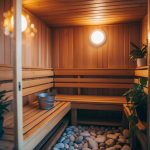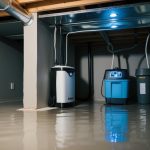Basement Makeovers: DIY Waterproofing Solutions for a Dry, Cozy Space
Foundation Waterproofing and Structural Integrity
A solid foundation is crucial for any building’s long-term stability. Waterproofing plays a key role in maintaining the foundation’s integrity by preventing water damage. Water seeping through cracks can weaken the structure over time, leading to costly repairs.
Different methods are available to ensure a dry and stable foundation. Exterior waterproofing involves applying a waterproof membrane to the outer walls of the foundation. This creates a barrier, preventing moisture from penetrating the concrete.
Interior waterproofing solutions can also be effective. These may include sealing cracks and applying waterproof coatings to interior walls. Drainage systems, like French drains or sump pumps, help manage water levels around the foundation, reducing potential damage.
Maintaining structural integrity reduces the risk of foundation issues. Regular inspections can identify vulnerabilities early. Homeowners or professionals should examine the foundation for cracks, water stains, and signs of moisture. Early detection helps avoid larger problems.
Proper grading around the home’s exterior directs water away from the foundation. Installing gutters and downspouts ensures rainwater is adequately channeled away. By keeping water at bay, these measures preserve both the foundation’s waterproofing and structural integrity.
Insulating Your Basement for Added Protection
To create a cozy and dry basement, insulation plays a pivotal role. It not only helps with temperature control but also aids in preventing moisture penetration. Selecting the right insulation material becomes crucial. Common choices include fiberglass, foam board, and spray foam. Each has distinct properties that can enhance the energy efficiency of a basement.
Incorporating a vapor barrier is essential in combating moisture issues. This barrier is typically installed between the insulation and the outer wall. Its primary purpose is to prevent moisture from seeping through the walls, protecting both the insulation and the interior space. Selecting materials with effective moisture-resistance properties can lead to a longer-lasting solution.
Attention to detail is necessary when installing insulation in a basement. Ensuring all gaps and seams are properly sealed can improve the efficiency of the insulation. This not only aids in creating a comfortable environment but also helps in reducing heating and cooling costs over time.
Energy-efficient insulating methods significantly contribute to maintaining a dry basement environment. Choosing energy-efficient solutions can improve overall indoor air quality while reducing reliance on heating and cooling systems. The investment in high-quality insulation can offer long-term benefits by enhancing both comfort and sustainability.
Finally, to maximize insulation effectiveness, it is important to regularly inspect for any signs of moisture or damage. Regular maintenance ensures the insulation remains in optimum condition and continues to function effectively, supporting the goal of a warm, dry, and welcoming basement space.



